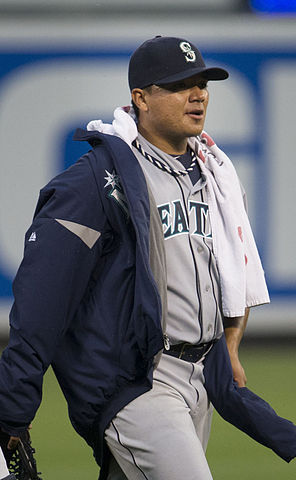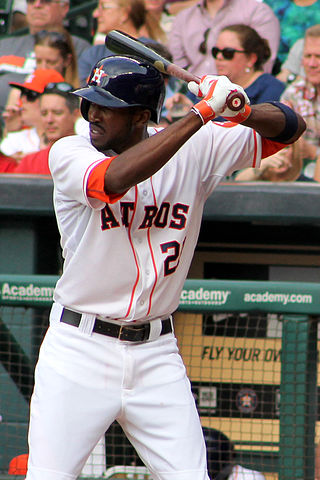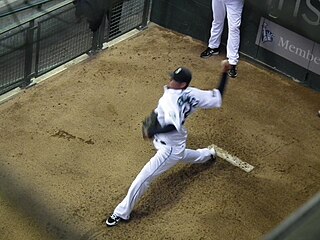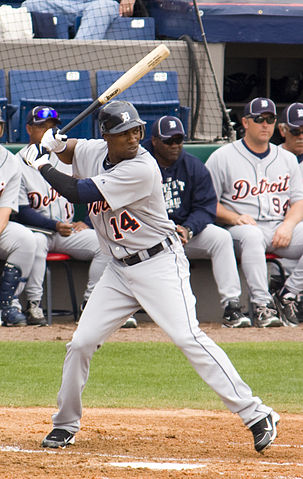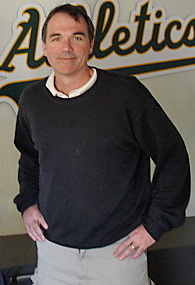 |
| Jack Zduriencik (wikimedia commons) |
I despise writing theoretical trade posts. Any old blogger can cook up some theoretical trade and analyze it, justifying why both teams should go for it. The ideas and posts are so formulaic. I dare you to find some random internet writer/commenter's trade proposal that doesn't follow one of these three patterns:
Pattern 1: The now-for-future swap. The (insert fan's favorite team) should trade (top prospect) and (best prospect at superstar's current position) for (superstar). (Superstar) would be the impact (arm or bat, depending on position) that the (fan's favorite team) need, and (other team) would be loaded a few years down the road when they are ready to contend.
Example: The Mariners should trade Taijuan Walker and Alex Jackson for Giancarlo Stanton. Stanton would be the impact bat that the Mariners need, and the Marlins would be loaded for a few years down the road for when they are ready to contend.
Pattern 2: The delusional trade pillage. This comes in two variants, depending on where the fan's team is in the standings. If they are contending, it looks like, "(fan's favorite team) gets (superstar) for (young bench player that's a marginal prospect at best). Once a team with a superstar is out of contention they should grab any young player with a pulse."
Example: The Mariners get Giancarlo Stanton for Stefen Romero. Stanton is about to get paid but Romero is cheap, young, and has right-handed power!
If the fan's team is not contending, then this kind of trade looks like, "(fan's favorite team) trades (marginal starter that had a hot April, May, or June) for (other team's top prospect). (Other team) needs impact (bat/arm) and need to JUST WIN, BABY."
Example: The Rangers trade J.P. Arencibia to the Mariners for Taijuan Walker. The Mariners need an impact bat and Arencibia drove in a run last night. They can't let Walker's potential get in the way of WINNING NOW.
Pattern 3: Speculating on a rumor from a reporter. This is the most common of all.
Example: Reports are that the Mariners might be looking at Chris Denorfia of the Padres. 90% of internet commenters have next to no idea who Denorfia is. So, with the report in mind, they then take Denorfia and fit him in Pattern 2, since he isn't the superstar that could fit in Pattern 1.
Example: The Mariners should give up Stefen Romero to get Chris Denorfia.*
*
Actually, I could see the Padres taking Romero for Denorfia. Sometimes random, pattern-fitting trade proposals make sense.
So now that I've written every trade proposal you could ever run into this time of year, let me get to the second point in this post. Jack Zduriencik, apparently,
is hard to make a deal with, according to anonymous sources that respected journalists Ken Rosenthal and JP Morosi talk to. The money quote, from their joint article:
"They think, ‘Who can we give up that will never be any good?’ They don’t want to give up anyone who will haunt them. That’s just flat-out fear.”
True to the blue :-(
The evidence follows classic conspiracy-theory logic. There is no way to prove this statement wrong, particularly because Zduriencik has not pulled a noteworthy trade in a few years. We have almost no idea what kind of deals the Mariners considered or proposed. The only "proof" is the lack of proof to contradict the theory. Zduriencik is guilty until proven innocent.
Furthermore, to fully play devil's advocate, there is an art to trade deadline deals. The media can (and is) a pawn in the trade deadline game. Everyone wants to make a deal that favors their team. The anonymous sources in Rosenthal and Morosi's article have heavy incentives to criticize Zduriencik's trade style. If they can manufacture an added sense of urgency and pressure on Z, then he might be more willing to part with better talent. It is in their best interest to push a bad reputation on him whether these anonymous sources actually believe Zduriencik is gun shy or not on deals. It could help their leverage, and since they are anonymous, comes with virtually no risk of harming their bargaining position and relationship with Zduriencik.
However, the anonymous sources got me thinking about Z and his trading style. I doubt he is as skittish as "anonymous sources" make him out to be, but there is evidence to suggest he values his own players rather highly.
Jack Zduriencik, way back when he started on the job, seemed to be the master of trades. He made a massive 3-team, 12-player swap that gave away J.J. Putz and brought back Franklin Gutierrez and Jason Vargas. The next offseason he made the megaswap for Cliff Lee. Zduriencik seemed to quickly assert himself as a crazy wheeler and dealer.
Here's the deal though: None of those trades involved guys that Zduriencik's regime drafted or developed. The same goes for the Doug Fister deadline deal, the most recent trade deadline swap Zduriencik pulled. Fister was drafted by Bill Bavasi. The only Zduriencik draft picks traded to date are Carter Capps (for LoMo) and Stephen Pryor (for Kendrys Morales). Bullpen guys that had been leapfrogged by other bullpen prospects, namely Dominic Leone. Additionally, Kendrys spent a year with the Mariners and Zduriencik tried to sign him back to the M's in a few different ways last offseason. The crazy wheeling and dealing ways of Zdurienick evaporated once "his guys" populated the Mariners system.
Take an even deeper look at the system, and Zduriencik's preference for his own guys becomes even more obvious. He originally drafted Tom Wilhelmsen in Milwaukee. Corey Hart, although a free agent signing, is also a draft pick of Zduriencik's from his Milwaukee days. Lucas Luetge, a mildly productive Rule 5 pick from a few years ago, stays around the 40-man roster and was plucked from Zduriencik's Milwaukee farmhands too.
None of these moves make Zduriencik an outlier per se. Teams draft players because they like them (duh) - moreover, particularly in the mid to late rounds, teams are highly likely to draft players that they value significantly more than other teams. The simple fact is that, by the 10th round or so, every player has been passed over by every team 9 to 10 times. So, teams generally select players they are less interested on passing on than every other team in baseball. The system is subtly designed for teams to prefer their own players to outsiders.
Additionally, it is worth remembering that Zduriencik got the Mariners job because of the phenomenal work he did building up the Brewers farm system. His baseball DNA is grounded in finding amateur talent and watching it flourish.
Conventional wisdom suggests that, if Zduriencik is on the hot seat, he would go in full "win now" mode and trade the farm. I'm not so certain that's how he would respond though. Managers and GMs generally prefer to go down with "their guys," and nobody is more Zduriencik than the prospects in his farm system.
With all that said, Zduriencik will trade his own guys. Remember that he had pulled off a trade with the Diamondbacks a few years ago that would have landed the M's Justin Upton for a package that included Taijuan Walker and Nick Franklin. Justin Upton rejected the trade, not the Mariners or the Diamondbacks. Zduriencik successfully brokered that deal. The Putz megadeal and Cliff Lee trades can't be forgotten either, even if they didn't involve Z's own draftees.
Zduriencik is just like every other general manager in baseball - he pulls a trade when the price is right in his estimation. He has in the past, and will continue to do so in the future, perhaps (hopefully) as soon as today, tomorrow, or Thursday before the trade deadline passes. For better or worse, he appears to prefer his own players more than most general managers.
I'd say that Mariners fans better get ready for a quiet deadline. Perhaps Zduriencik trades the farm for Giancarlo Stanton - I think Z would be willing, whether the Marlins would be too is another question - but he definitely would trade next-to-nothing for a guy like Chris Denorfia.
Start rooting for Taijuan Walker, D.J. Peterson, Brad Miller, Chris Taylor, and others to figure out life in the big leagues in a hurry before Robinson Cano and Felix Hernandez exit their primes. That's true to the blue, at least underneath Jack Zduriencik's leadership.
